Results of Your Collaboration With Us This Year on Canadian Wildlife
The Canadian Wildlife Federation spent this year collaborating with people around the world who care about wildlife. We spanned fields to create a native grasslands coalition, joined with Indigenous Peoples to work on fish habitat restoration and flew to new heights to work with international partners for Monarch Butterfly rights-of-way. We partnered with fish harvesters to trial on-demand fishing gear, networked with locals to save at-risk turtles and bats, interacted with Canadians to reach two million biodiversity observations on iNaturalist and partnered with innumerable educators and students on wildlife conservation.
It’s been a busy year! Get the details on how your support and dedication to Canadian wildlife has helped our species and spaces.
Endangered Species & Biodiversity
Helping Canadian Bats At-Risk
As bats begin to slowly develop resistance to White-nose Syndrome, we are focused on reducing other threats to their survival.
- This year, we mapped the movements of Big Brown Bats and Endangered Little Brown Myotis using radiotelemetry at three different sites, enabling us to locate 14 new roosts. In total, we tracked more than 40 bats and banded 260 bats, which will allow our team and other researchers to identify them in future studies.
- We launched an online Report a Bat Sighting platform to allow people to take part in a scientific study. By registering bat boxes and reporting bat observations, people can continue to contribute to the Canadian Bat Box Project.
- We launched a “battitudes” study, with the aim to understand people’s attitudes towards bats and conservation behaviours after participating as a community scientist in the Canadian Bat Box Project. The study also helps us understand successes and areas of improvement for future initiatives.
- We created a Safely Managing Bats in Buildings guide to inform the public on how to share space with bats and, if an eviction is necessary, how and when to perform one to cause the least harm.
- We have also been busy spreading the word for bat conservation through positive social media messaging, dispelling myths and offering accurate information about these small mammals at HelpTheBats.ca.
- We are working with the British Columbia and Alberta Community Bat Programs to build a national Bat-friendly Community Certification that will encourage Canadian communities to protect their local bats. If you’re an interested municipality, First Nations community, post-secondary campus or similar organization, please leave us a comment below or e-mail info@cwf-fcf,org.
Helping Freshwater Turtles
- We conducted surveys for the Endangered Blanding’s Turtle in the spring with the goal of finding them in previously undocumented areas. We found Blanding’s Turtles in several new areas providing a more complete understanding of their range in Ontario.
- We also conducted road surveys and found more than 150 dead turtles on roads this year in eastern Ontario — including 25 dead Blanding’s Turtles. Wildlife fencing has now been installed at four of the worst locations for turtle road mortality, but more work is needed in other areas.
- We collected and incubated more than 1,000 turtle eggs from eastern Ontario. We incubated eggs from Blanding’s, Eastern Musk, Northern Map, Painted and Snapping Turtles. This year was the first time ever that we found eggs from the elusive Eastern Musk Turtle – which lays extremely tiny eggs.
- This year we incubated 600 Blanding’s Turtle eggs, which is twice as many as any previous year. This represents a huge boost to this endangered species.
- We also installed more than a dozen nest protectors on Painted and Snapping Turtle nests that were at high risk of predation, protecting more than 300 additional turtle eggs.
- A highlight of the turtle egg incubation work was having one clutch of eggs produce two albino Blanding’s Turtles. Albino turtles are rare in the wild and this is the first known occurrence of albino Blanding’s Turtles in Canada.
Tracking Biodiversity With iNaturalist — More Than 20 Million Wildlife Observations!
- Kudos goes out to the amazing iNaturalist community where more than 267,000 Canadians have helped iNaturalist Canada reach this amazing milestone: two million observations! Ten years ago, CWF was proud to partner with iNaturalist.org to launch iNaturalist Canada in order to help Canadian wildlife.
- In 2025, we’ve come across some truly amazing discoveries this year with iNaturalist, such as a rare find of the imperiled Black Witch’s Beard Lichen — the only observation in the world on iNaturalist! Also, an incredible battle between a marine fish that can breathe out of water (the High Cockscomb) and a Western Terrestrial Garter Snake. Finally, a recording of evolution in action with this observation of a Red-spotted Admiral x Viceroy hybrid butterfly.
- Also this year, we led the Canadian push of the City Nature Challenge that takes place in the spring, using iNaturalist to document in a friendly city to city competition. If your community didn’t take part in 2025, find out how to get involved for 2026. Participants managed to record more than 150,000 wildlife observations in just four days.
- We book-ended the summer with the CWF Great Canadian Bioblitz. People from all over Canada came together to track wildlife as we transition into fall. We enabled 16 in person bioblitzes across the country, including expert surveys for underrepresented species such as rare fungi, spiders on B.C.’s coast, freshwater fish and uncommon bats.
Education & Leadership
We’re Wild About Education
- In July, we participated in the Calgary Zoo’s Environmental Educators Summit, where we connected with fellow professionals and educators and shared insights on fostering environmental literacy. It was a great opportunity to exchange ideas and explore new strategies for nature-based education.
- In August, we hosted two three-day lead teacher training retreats in Calgary and Winnipeg, in collaboration with the Nature Education Collective. A total of 45 lead educators from across nine school districts in Winnipeg and Calgary participated, gaining valuable tools and strategies to make nature-based education part of their teaching practice.
- We also supported local summer camps by training camp counselors in Project WILD, helping them lead nature-based programming that sparked curiosity and environmental awareness in campers throughout the summer.
Helping Wildlife Through Gardening
Experts agree that gardeners have the power to make a critical difference in conservation. Whether the outdoor space surrounds our home, cottage or business or is a section of school property or community park, together we are supporting the wildlife we love…and need!
- This year our pollinator school program, WILD Spaces, continued to engage thousands of students across the country with our online learning content. In addition, CWF sent 150 schools native plant seed packets for school pollinator gardens: a further 59 schools were sent almost 2,400 beneficial plants.
- The Gardening for Wildlife program ran its annual webinar series, reaching several hundred Canadians. Thanks to some great speakers, we learned about the impacts of bird strikes and how to prevent them, the importance and remarkable nature of flies and moths and how to garden with wildlife in mind. We also delivered several online and in-person talks to interested groups and ran our annual garden tour at CWF headquarters with great enthusiasm, prompting us to offer more next year.
- So far this year, our Garden Habitat Certification has certified 1,200 properties as “Wildlife-friendly Habitat” bringing our total number of properties to nearly 7,000. Several hundred of this year’s property owners purchased a sign to celebrate their garden accomplishments and raise awareness, showing the purpose behind their planting.
Forests & Grasslands
Networking the Native Grassland Conservation Program
We visited eastern Saskatchewan with our Living Labs-Central Prairies partners at Agriculture and Agri-food Canada and the South of the Divide Conservation Action Program in May to set up pollinator sampling transects on pastures and hay fields. This work will help create beneficial management practices for seeding pastures that benefit insect pollinators. It will also contribute to scientific publications we are working on with Dr. Behnam Motamedinia of the Centre for Biodiversity Genomics at the University of Guelph on the diversity of insects on Saskatchewan’s native grasslands.
The team is busy working with the Canadian Grassland Coalition, a nation-wide collaboration of grassland enthusiasts committed to improving awareness among Canadians of the wonders of natural grasslands. The coalition consists of about 25 stakeholders and together we will lead a targeted grassland campaign focused elevating public understanding of Canada’s grasslands — what they are, why they matter, and how they’re disappearing, while inspiring meaningful action to protect them. This campaign will launch in early 2026 — stay tuned!
Collaborating with Calgary’s Miistakis Institute and the Alberta Conservation Association, we are studying Pronghorn movements on the prairies. We have been meeting with municipalities, Indigenous communities, and provincial representatives in Alberta and Saskatchewan to see what we can do to help wildlife cross prairie highways. Over- and underpasses specifically designed for wildlife to cross major highways are being built around the world as effective conservation solutions to habitat fragmentation. This collaboration is exploring this idea for the Trans-Canada Highway between Swift Current and Medicine Hat.
Conserving Grassland Birds
We completed another successful field season of surveys for Bobolinks and Eastern Meadowlarks on pastures and hay fields in western Quebec. This project, done in collaboration with ALUS, encourages partner farms to use best management practices to reduce the harm of hay cutting and livestock grazing on grassland birds found on their lands. We surveyed nine farms new to the project, of which eight had Bobolinks and/or Eastern Meadowlarks breeding in their fields.
Rights-of-Way as Habitat Program
- The team has continued to restore working landscapes into native meadow habitat by partnering with a variety of land managers in southwestern Ontario, GTHA, Eastern Ontario and newly in the Outaouais region of Quebec.
- Our first project in Quebec broke ground this spring. CWF aims to expand programming in this region and is currently exploring partnership opportunities and preparing resources for francophone audiences.
- For the 2024-2025 year, we restored a total of 33.54 ha of native meadow habitat for Monarch Butterflies. That brings us to more than 1,828 ha of restored habitat thus far over the course of the Rights-of-Way as Habitat program.
Lakes & Rivers
Restoring Connectivity and Advocating for Fish Habitat
CWF’s freshwater program’s key focus continues to be restoring connectivity by assessing and rehabilitating barriers to fish passage and advocating for the conservation of critical fish habitat. Here are some highlights:
- CWF is working with a group of Indigenous partners and non-governmental organizations to create an expanded cross-border conservation initiative for American Eel. These unique fish must migrate between marine and freshwater ecosystems to complete their life cycles, however, they face particular risks from hydroelectric dams which create barriers to travelling upstream and deadly hazards during their downstream migrations. There are emerging technologies, strategies and practices, that could improve safe eel passage while not significantly affecting power generation.
- CWF has developed a mobile app for community assessments of aquatic barriers, called the CanFishPass app. The app guides users to visit the location of potential aquatic barriers and perform quick, easy assessments to improve Canada’s barrier data. Users do not need training or equipment, and assessments are completed without going into the water. Every assessment will be integrated into CWF’s Canadian Aquatic Barriers Database to encourage meaningful action to replace problematic structures. Learn more: https://cabd-docs.netlify.app/docs_user/docs_user_app
- CWF is developing or implementing 15 watershed connectivity restoration plans across Canada, with seven led by First Nations. In these watersheds, barriers are mapped and prioritized to restore habitat access for fish such as salmon and trout. Read more about some of our 26 completed passage restoration projects in B.C.
- CWF is actively working to promote better results for fish and fish habitat under the Fisheries Act including pushing for better habitat offsetting, stopping the buildup of cumulative effects and the fragmentation of our waterways from barriers. In the last year, CWF has appeared before the Parliamentary Committee on Fisheries and Oceans and the Senate of Canada. We continue to meet with government ministers, legislators and senior government staff to achieve these goals. This includes the implementation of third-party habitat banking and fees-in-lieu as sustainable offsets that will ensure habitat restoration and conservation is addressed as Canada pursues an agenda of nation building development.
- CWF is collaborating with the Atlantic Salmon Federation to map barriers to Atlantic Salmon across their range in Canada. More information on this project will be released next year.
Loving Shorelines with Love Your Lake
Shoreline property owners continue to love their lake with the shoreline assessment and stewardship program, Love Your Lake. Love Your Lake is a joint program and we thank our regional partners in British Columbia, Ontario and Nova Scotia for delivering this program on lakes within their area.
- This past summer approximately 2,700 shoreline properties were assessed on 15 lakes. These property owners will receive a free personalized shoreline property report that contains voluntary tips and guidance on ways of improving their shoreline and lake health. Participating lake groups will receive a lake summary report with community level stewardship recommendations.
- Five microgrant projects took place on lakes that had been assessed through the Love Your Lake program. Successful lake associations were awarded with up to $500 to naturalize shorelines with native plants. Thanks to many community volunteers for helping restore more of Canada’s lake shorelines!
- Since the program began in 2013, close to 55,000 properties have been assessed on 244 lakes. Over 4,000 kilometres of shorelines have been assessed, that’s about the same distance from Halifax, NS to Grand Rapids, Manitoba.
We look forward to delivering Love Your Lake on more of Canada’s lakes with the help of partners to further improve lake health for wildlife and future generations. More information on Love Your Lake can be found at LoveYourLake.ca. If you would like to deliver Love Your Lake on your lake, please e-mail us at [email protected].
Coasts & Oceans
Large Whale Programs
The Marine Conservation Science Team had a busy and eventful summer working alongside multiple partners to promote sustainable co-existence with Canada’s large whales!
- The marine research team started the summer strong with a new publication where we found the time-area fishery closures in the Gulf of St. Lawrence are reducing up to 62 per cent of the entanglement risk to North Atlantic Right Whales. This helps us to better understand how we can continue to improve management to better protect these whales.
- Our field team has continued to expand trails of on-demand fishing gear, completing seven trials so far this year, with over 300 deployments – making our lifetime deployments over 1,600 since 2019! These trials have included four new fish harvester partners who are now well versed in how to use this gear.
- Our field team has also been exploring the suitability of gear location marking systems for on-demand fishing gear across Atlantic Canada by trialing devices able to determine the position of gear underwater. Through extensive at-sea trials, we are investigating the accuracy of these devices to minimize gear conflict and help the adoption of on-demand gear.
- Out in British Columbia our Pacific program team had the pleasure of testing five on-demand systems with the Tla’amin Nation Guardian team in August 2025 with 27 deployments, in addition to trials conducted with commercial prawn fisher harvesters in the spring. We were also involved in demonstrating on-demand gear for the Vancouver Port Authority and the Tsawwassen and Musqueam First Nations.
- Our British Columbia team has also been assessing the risk of entanglement of Humpback and Grey whales. We have been updating our methods, reaching out to partners and running preliminary analyses of whale occurrence across the West coast. We will present this work at our upcoming 2nd annual stakeholder workshop in January.
- Lastly, we continue to advocate and engage with multiple partners to support the adoption of on-demand fishing gear. This has included warehouse and gear demonstrations with members of the Nova Scotia Provincial Government Fisheries Department, and Fisheries and Oceans Canada. In fact, we will be assisting Fisheries Officers with Conservation and Protection teams to conduct their own trials this year to help train officers on enforcement of this gear.
With several conference presentations and meetings with government, fish harvesters and other collaborators in the fall, our team is excited to bring this momentum through the rest of 2025 and into 2026.

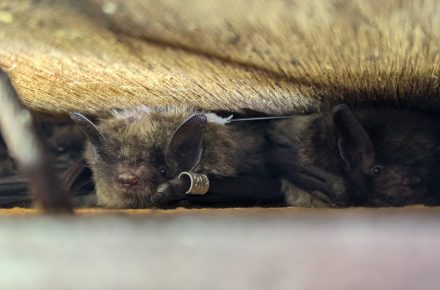
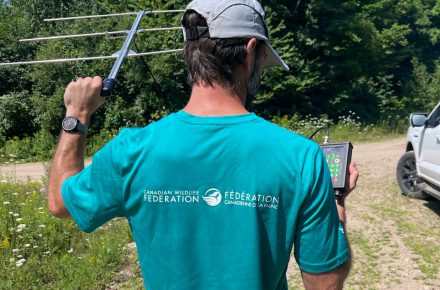
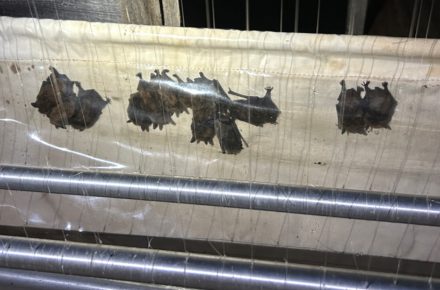
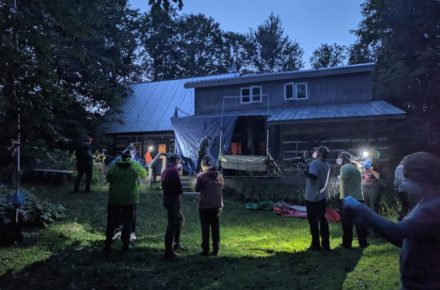
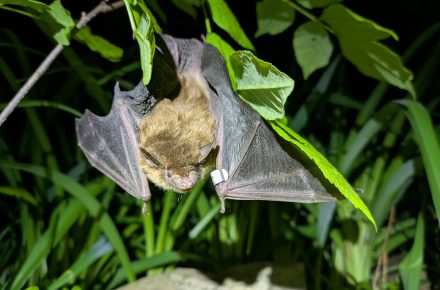
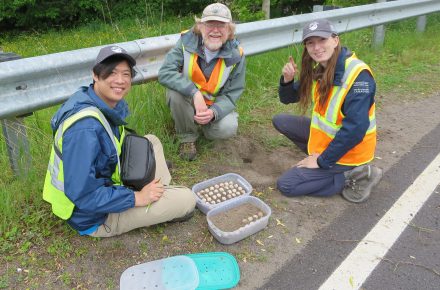
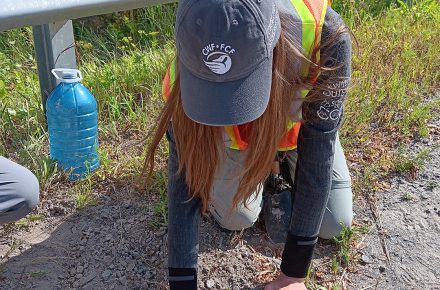
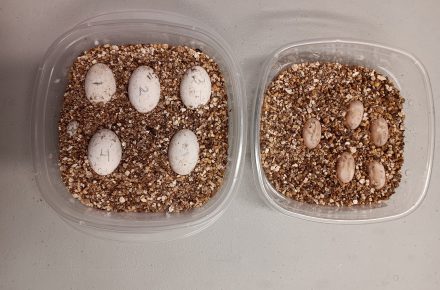
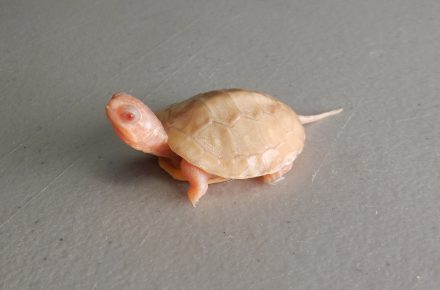
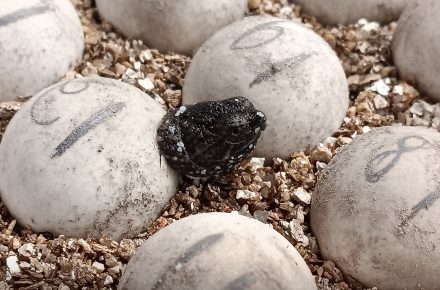
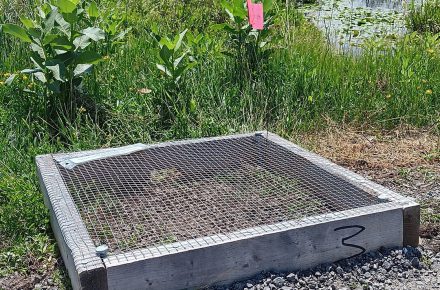
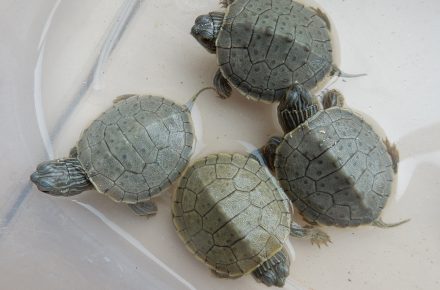
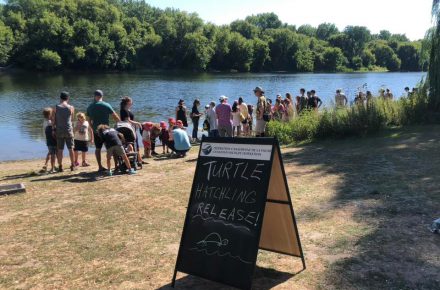
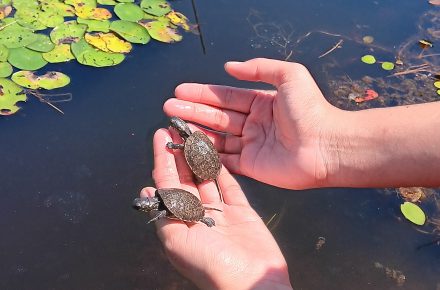
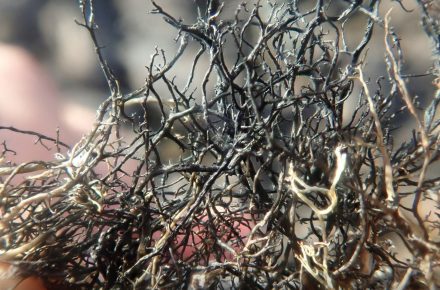
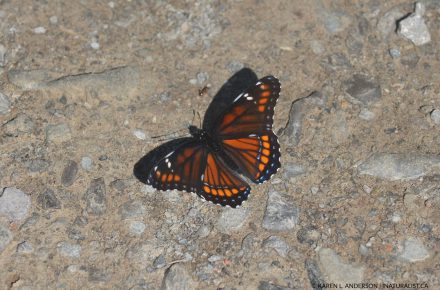
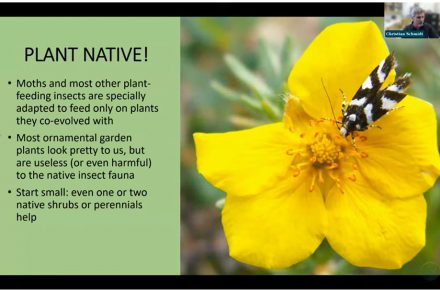
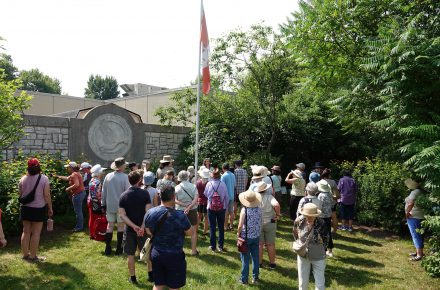
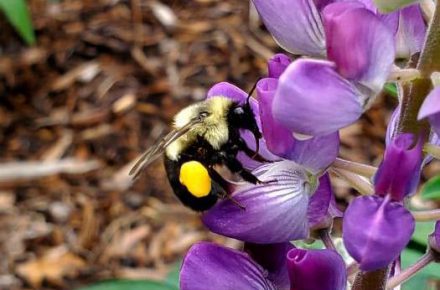
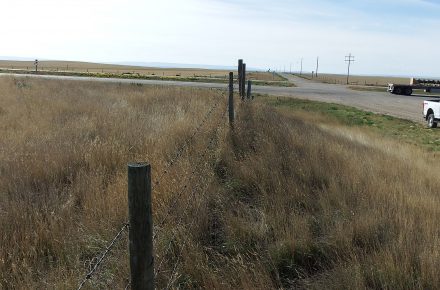
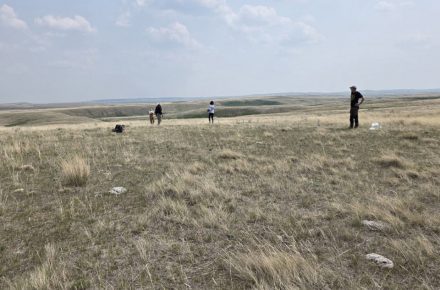
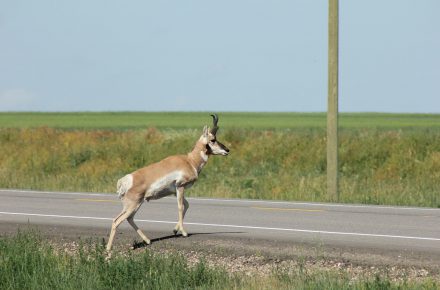
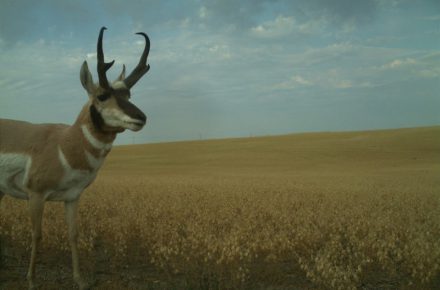
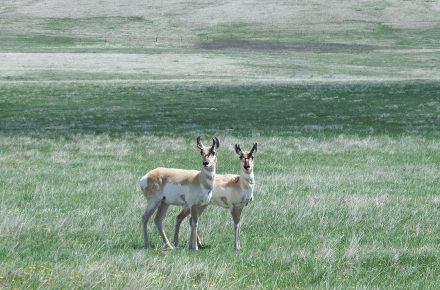
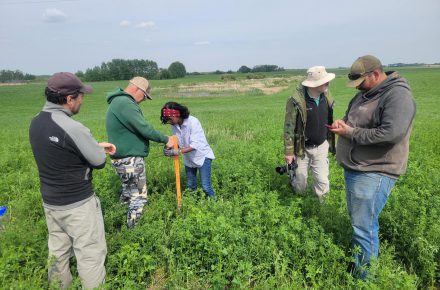
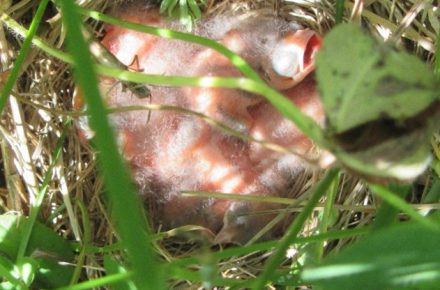
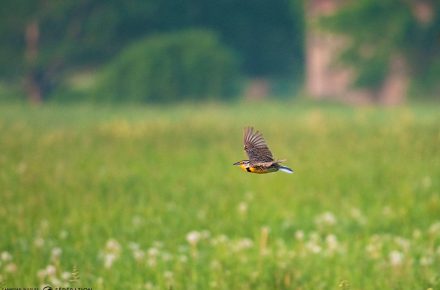
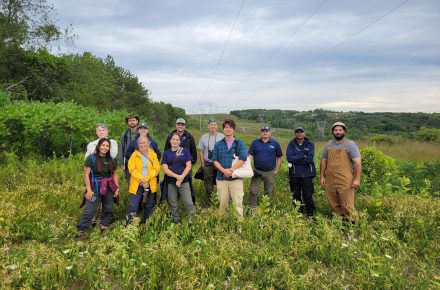
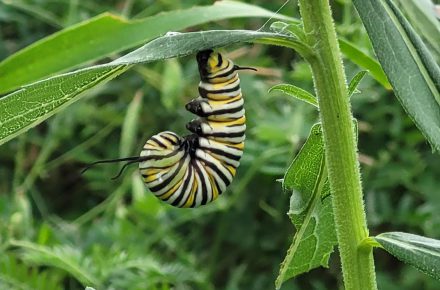
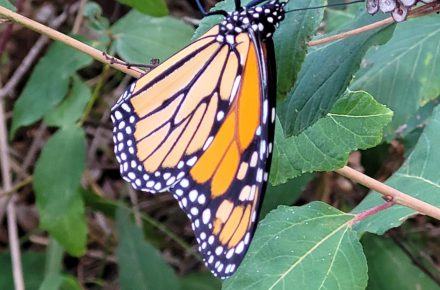
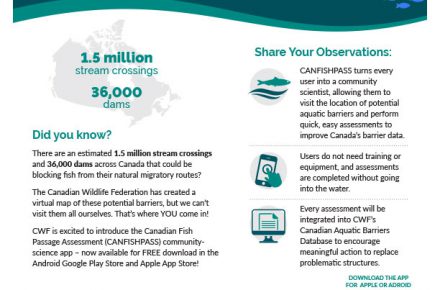
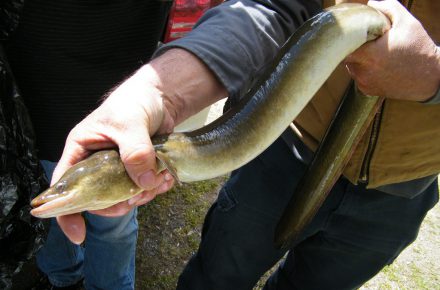
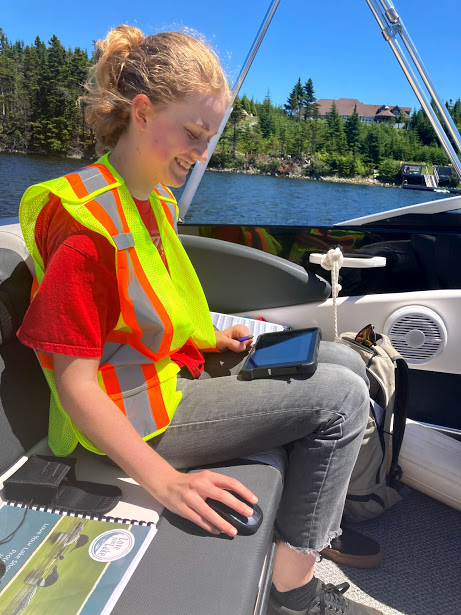
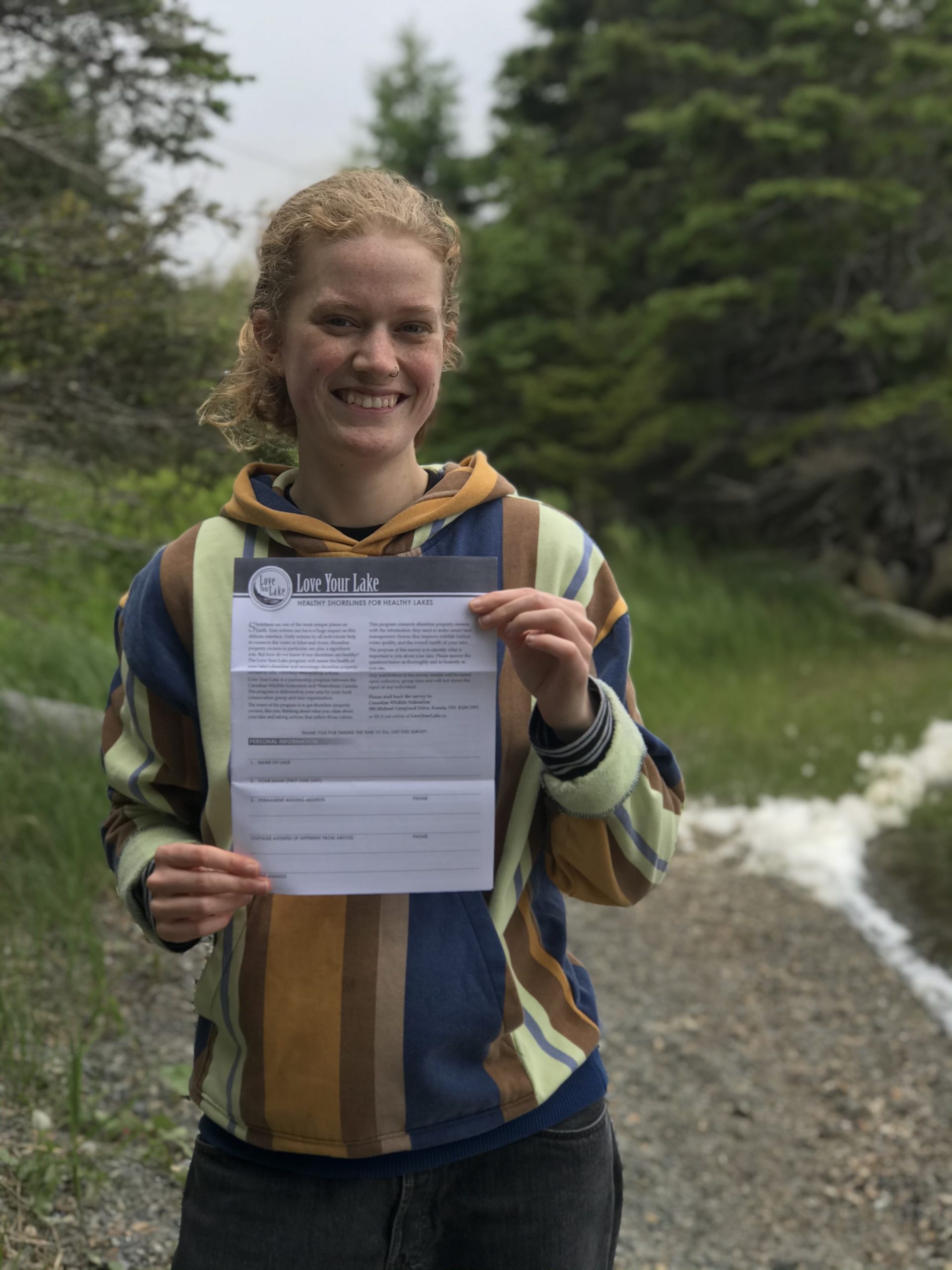
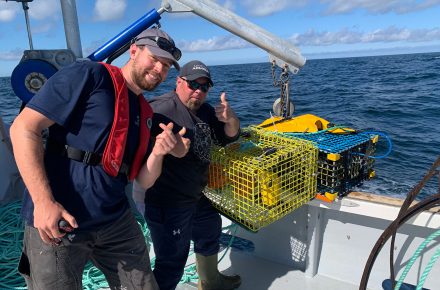
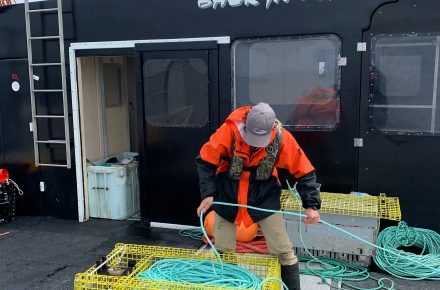
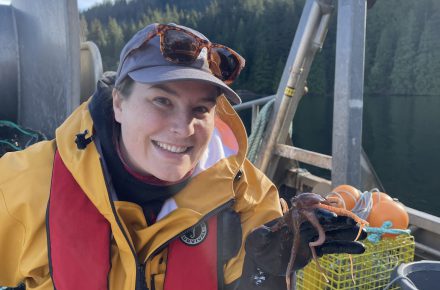
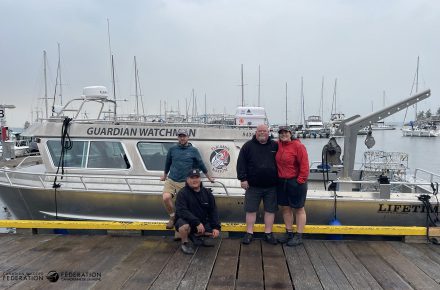
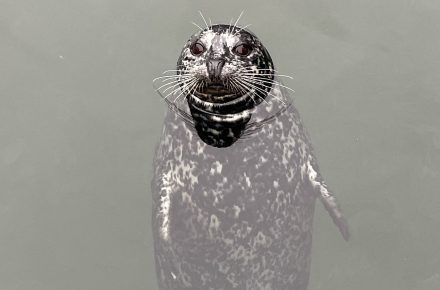
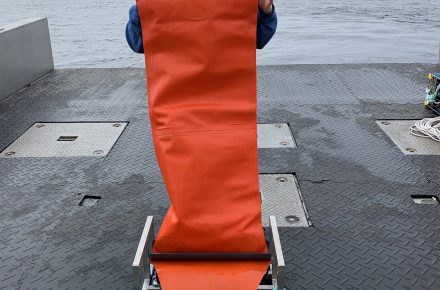
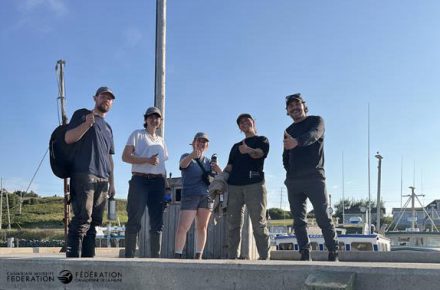
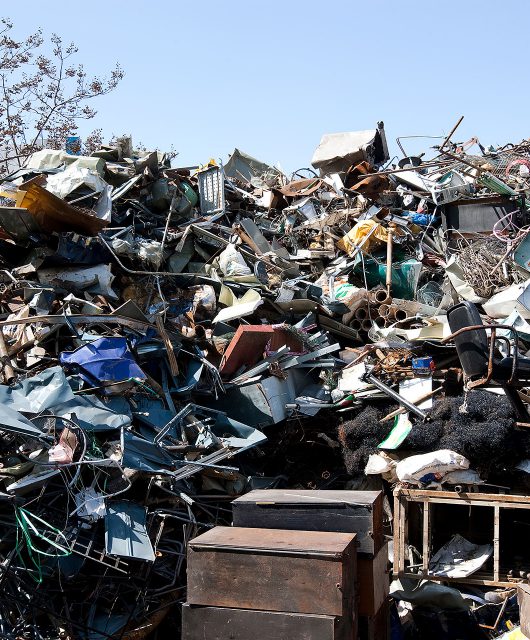
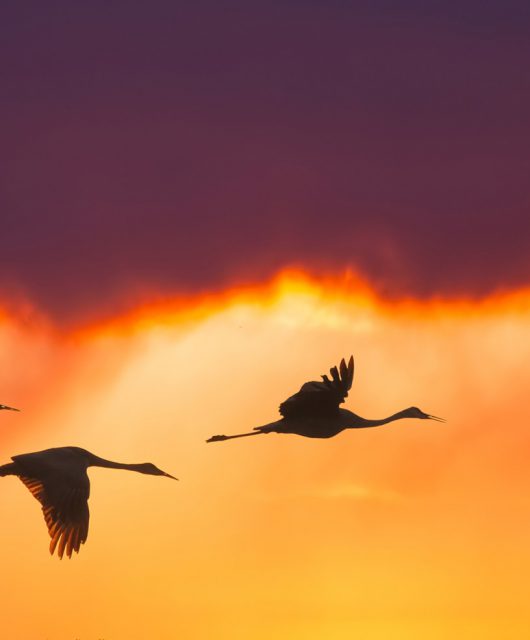
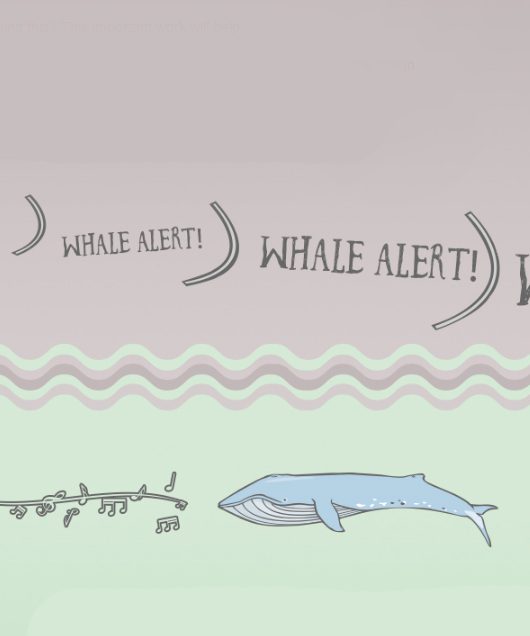
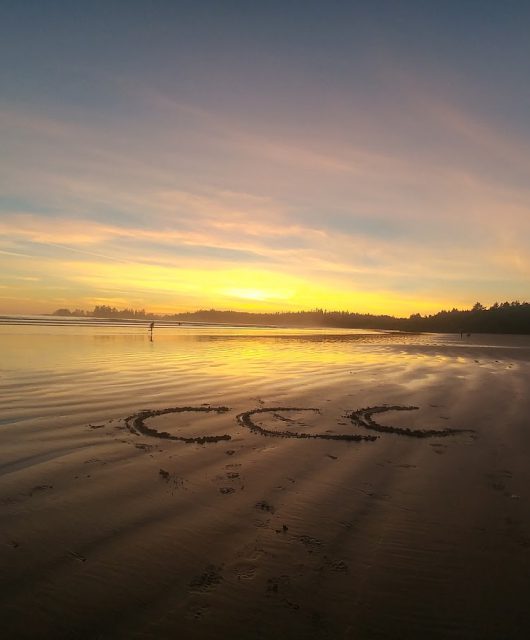
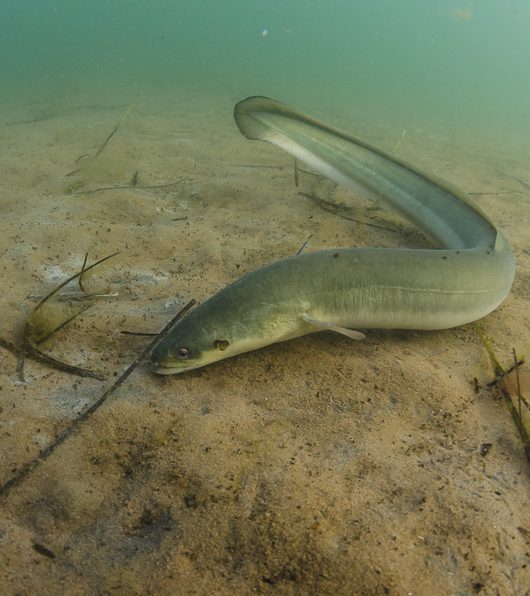
1 comment
I’m glad you are helping the monarch butterfly. As a high shool student I captured and killed 2 monarch butterflies. I feel so guilty now. I still have them and feel so sad they are no more around Ottawa there were so many in the 1950’s. Thank you for all the other animals you are saving.